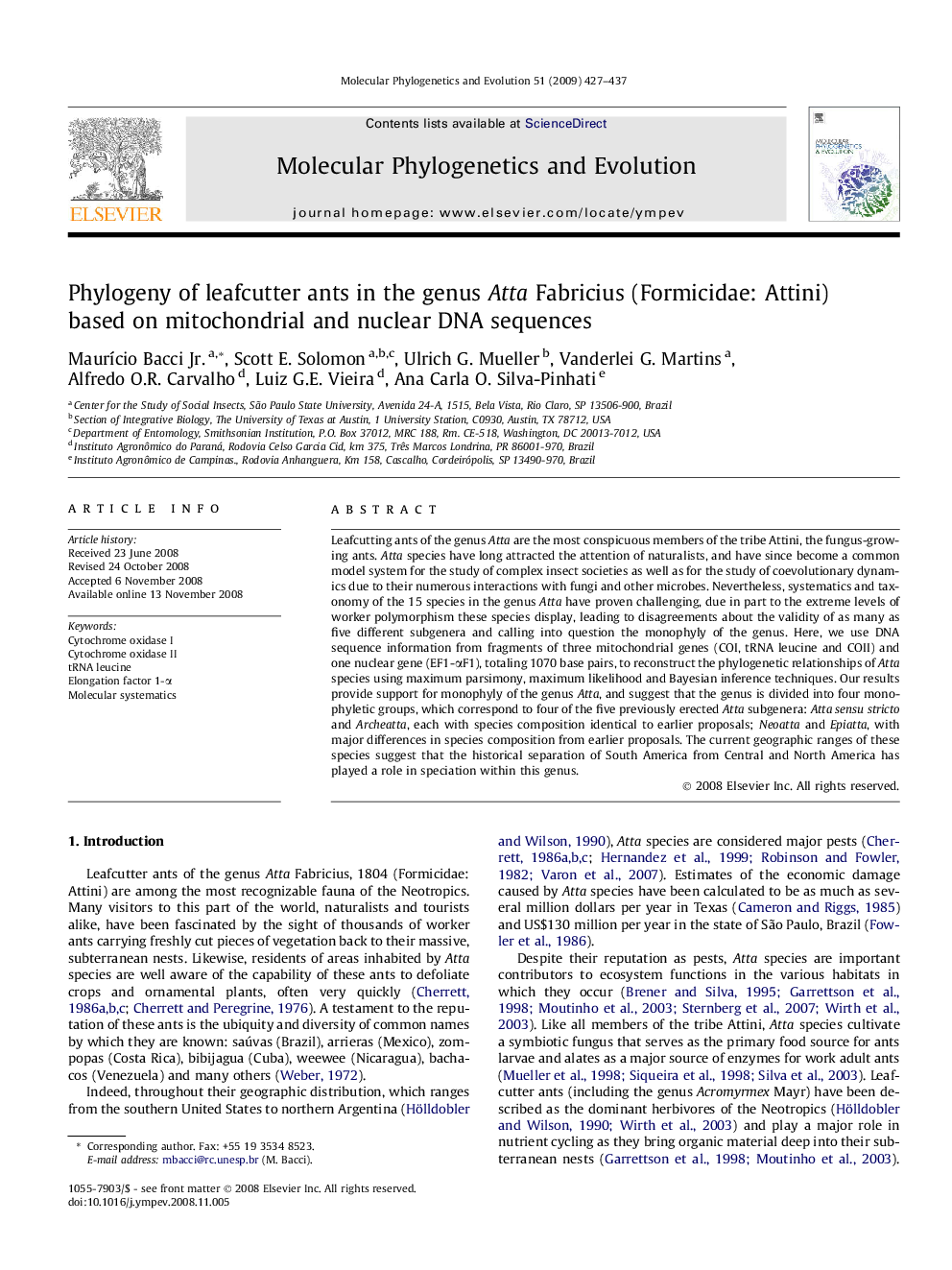| Article ID | Journal | Published Year | Pages | File Type |
|---|---|---|---|---|
| 2834697 | Molecular Phylogenetics and Evolution | 2009 | 11 Pages |
Leafcutting ants of the genus Atta are the most conspicuous members of the tribe Attini, the fungus-growing ants. Atta species have long attracted the attention of naturalists, and have since become a common model system for the study of complex insect societies as well as for the study of coevolutionary dynamics due to their numerous interactions with fungi and other microbes. Nevertheless, systematics and taxonomy of the 15 species in the genus Atta have proven challenging, due in part to the extreme levels of worker polymorphism these species display, leading to disagreements about the validity of as many as five different subgenera and calling into question the monophyly of the genus. Here, we use DNA sequence information from fragments of three mitochondrial genes (COI, tRNA leucine and COII) and one nuclear gene (EF1-αF1), totaling 1070 base pairs, to reconstruct the phylogenetic relationships of Atta species using maximum parsimony, maximum likelihood and Bayesian inference techniques. Our results provide support for monophyly of the genus Atta, and suggest that the genus is divided into four monophyletic groups, which correspond to four of the five previously erected Atta subgenera: Atta sensu stricto and Archeatta, each with species composition identical to earlier proposals; Neoatta and Epiatta, with major differences in species composition from earlier proposals. The current geographic ranges of these species suggest that the historical separation of South America from Central and North America has played a role in speciation within this genus.
